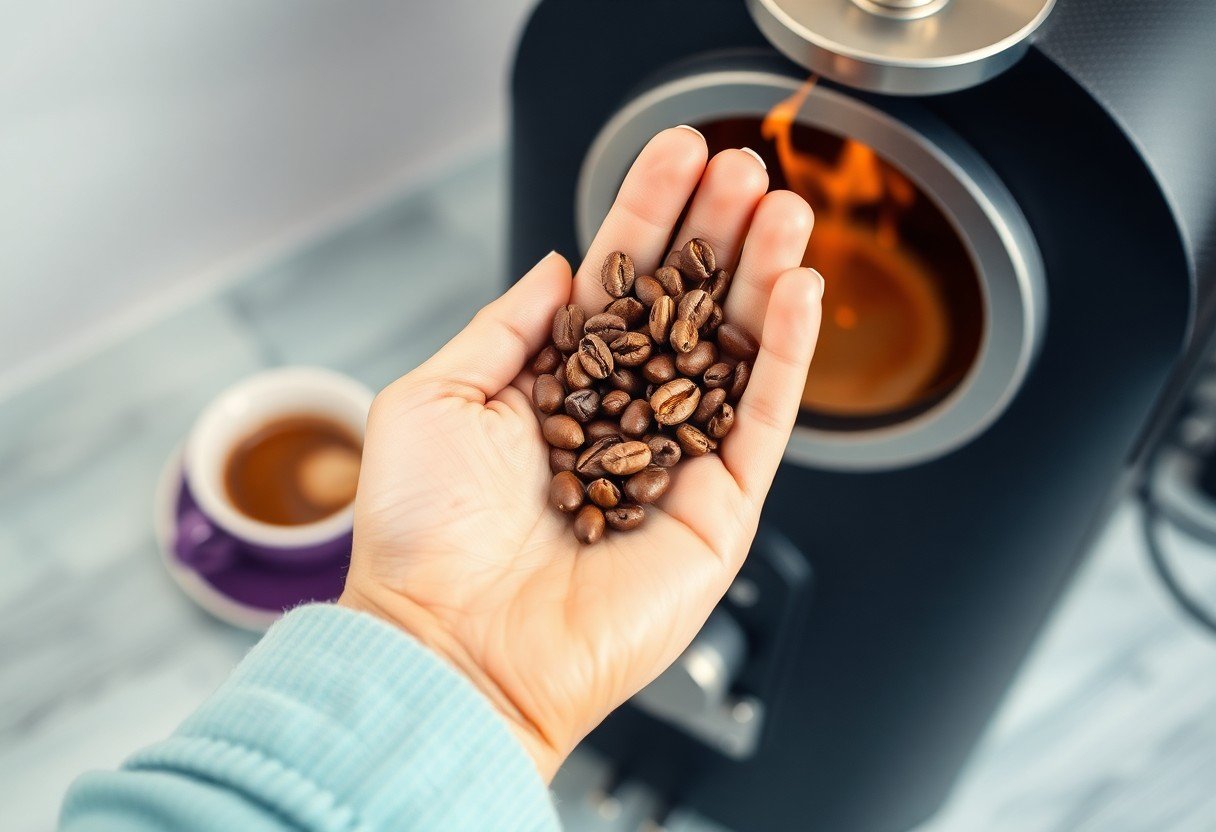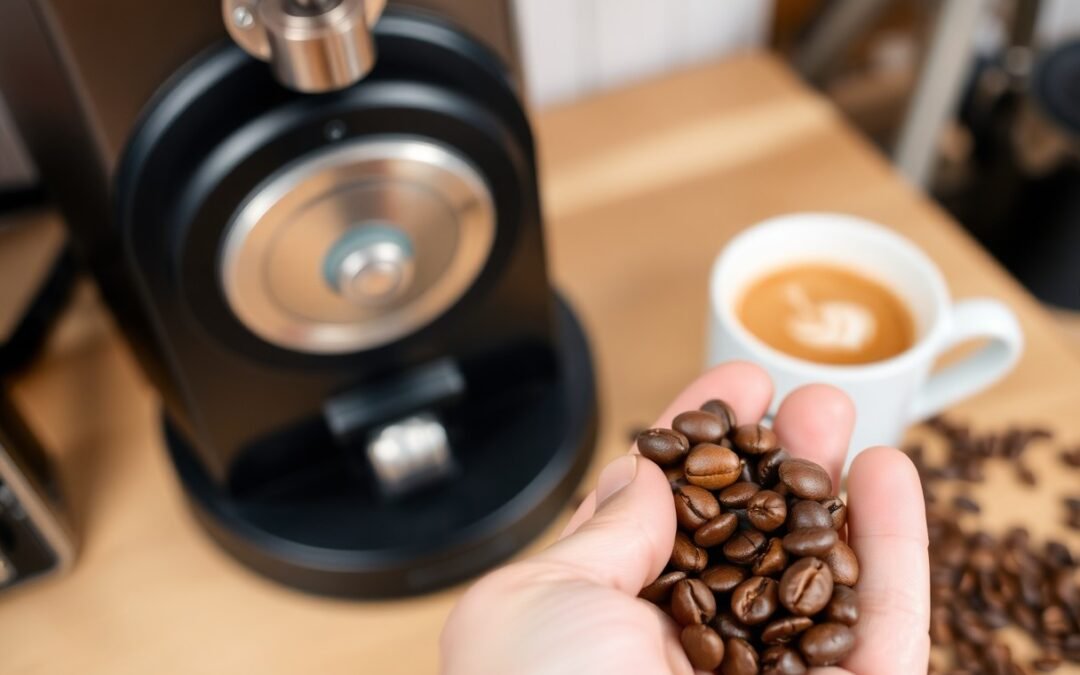This guide will empower you to explore the rich and diverse world of self-roasted specialty coffee, enhancing your brewing experience. By roasting your own beans, you can unlock unique flavors tailored to your taste preferences, promoting both creativity and enjoyment. You’ll learn about the various roasting techniques, how to choose the right beans, and tips to master the process. With each batch you roast, you’ll gain insights into the art of coffee that go beyond the ordinary cup. Let’s explore the delightful adventure of self-roasting coffee.
Understanding Coffee Beans
Before you launch on your journey to self-roasting specialty coffee, it’s necessary to understand the beans that will form the foundation of your unique brews. Coffee beans come from the cherries of the coffee plant, and their flavor profiles vary immensely based on their variety, origin, and processing methods. Diving deeper into the specifics can help unlock the delightful flavors that lie within each bean.
Types of Specialty Coffee Beans
For coffee enthusiasts, knowing the types of specialty beans is a vital step towards crafting a distinctive flavor experience. Below is a breakdown of the main types:
| Arabica | Often sweet and complex, featuring a wide range of flavors. |
| Robusta | Typically stronger and more bitter, with a higher caffeine content. |
| Liberica | Less common, offering unique floral and fruity notes. |
| Excelsa | A type of Liberica with a distinct tart flavor profile. |
| Origin Varieties | Each region has its characteristics, affecting the taste. |
Knowing the types of beans allows you to experiment with different profiles during roasting.
Factors Affecting Flavor Profiles
Now that you know the types of beans, it’s important to understand the factors that affect their flavor profiles. These elements can dramatically influence the final taste of your coffee, creating exciting opportunities for you to explore in your roasting journey.
- Origin: The geographical location where beans are grown.
- Processing Method: How the beans are processed after harvest impacts flavor.
- Roast Level: Different roasting degrees unlock various flavors.
- Bean Freshness: Freshly roasted beans can yield bolder flavors.
- Brewing Technique: Your preparation method can enhance or mute flavors.
Recognizing these factors empowers you to experiment and develop your unique coffee profiles.
Coffee’s flavor can be further influenced by numerous elements you may not have initially considered. For instance, the altitude at which the coffee is cultivated can cause a shift in acidity, while the time taken to roast affects the depth of flavor extracted. Variable brewing temperatures and times can also play a pivotal role in flavor extraction. Engaging with these facets will refine your skills and the quality of your coffee.
- Altitude: Higher altitude often leads to brighter acidity.
- Moisture Content: Influences both roasting and final flavor.
- Storage Conditions: Proper storage maintains bean quality.
- Water Quality: The water used can alter the overall taste profile.
- Equipment: Upgrading your tools can significantly enhance flavor.
Recognizing these influences will help you fine-tune your roasting techniques for extraordinary flavors.
How to Roast Your Coffee
Some enthusiasts find that roasting your coffee beans at home unlocks unique flavors and aromas that store-bought varieties often lack. This process not only allows you to customize roast levels but also enhances your appreciation for the coffee itself. You can dive deeper into the intricacies of the roasting process by checking out Unlocking The Flavor of Coffee – by BowTiedOctopod.
Equipment You’ll Need
Coffee roasting requires some crucial equipment to ensure a successful and enjoyable experience. You’ll need a reliable heat source, a roasting device (like a home roaster or pan), a thermometer for monitoring temperatures, and a cooling station for your beans. Additionally, having a scale is helpful for measuring your beans accurately.
Step-by-Step Roasting Process
You can master the home roasting process by following these simple steps:
Step-by-Step Roasting Process
| 1. Select your green coffee beans. | Choose high-quality specialty coffee beans. |
| 2. Measure out your desired amount. | Using a scale, weigh your green beans for consistency. |
| 3. Preheat your roasting equipment. | Ensure the roaster reaches the required temperature. |
| 4. Roast the beans. | Monitor closely, stirring or shaking as needed. |
| 5. Cool the beans quickly. | Transfer to a cooling tray or colander. |
| 6. Store your roasted coffee. | Place in an airtight container for freshness. |
A successful coffee roasting experience relies on precision and a good sense of timing. Each roast can vary significantly depending on your personal taste preferences and the beans you select. The key is to pay attention to the changing colors and aromas throughout the process, as this will help you identify your desired roast level. As you experiment, keep detailed notes on your techniques and results to refine your approach.
Tips for Perfectly Roasted Coffee
| Check your temperature regularly. | Maintain consistent heat for an even roast. |
| Taste often. | Sample your coffee at varying roast levels. |
| Be patient. | Allow the beans to rest post-roasting for richer flavors. |
Tips for Unlocking Unique Flavors
The key to unlocking unique flavors in your self-roasted specialty coffee lies in understanding the variables at play. Here are some tips to enhance your coffee experience:
- Experiment with different beans from various regions.
- Adjust your roast profile to emphasize floral, fruity, or nutty notes.
- Try different brewing methods, like pour-over or French press.
- Explore water temperature and brew time for optimal extraction.
Perceiving these nuanced flavors will deepen your appreciation for the art of roasting coffee.
Experimenting with Roast Levels
Roast profiles significantly influence the resulting flavor in your coffee. By adjusting the roast time, you can bring out distinct characteristics, such as light roasts highlighting acidity and transparency, while darker roasts emphasize body and introduce richer, chocolatey elements. Start with small batches, and note how variations in temperature and time affect your beans’ flavors, which will aid in developing your personal taste preferences.
Enhancing Flavors through Brewing Techniques
If you want to truly elevate your coffee experience, focus on your brewing techniques. Each method has unique parameters that can enhance or diminish specific flavors in your coffee, making it imperative to experiment with both time and temperature during the brewing process.
Through careful consideration of your brewing techniques, you can emphasize the flavors you love. For instance, using a coarser grind and a longer steeping time typically produces a smoother cup, while a finer grind can enhance extraction, resulting in a bolder flavor. Additionally, adjusting water temperature can unlock certain notes that might otherwise remain hidden, so don’t hesitate to tweak your methods until you find the perfect balance. Your creativity is the gateway to uncovering the full spectrum of flavors in your self-roasted coffee.
Factors Influencing the Roast
For successful self-roasting, understanding the various factors that influence your roast profile is necessary. These factors include:
- Type of coffee beans
- Roasting method
- Roast duration
- Temperature
This knowledge will allow you to experiment and enhance unique flavors. If you’re interested in learning more about how to roast coffee yourself?
Time and Temperature
Even slight variations in time and temperature can impact the final flavor of your coffee. Below is a quick reference to guide your roasting process:
| Roasting Time | Temperature |
| 8-12 minutes | 400°F-460°F |
| 12-15 minutes | 460°F-480°F |
Environment and Storage Conditions
Some factors in your roasting environment can affect the consistency of your coffee. Elements such as humidity, temperature stability, and even the altitude of your roasting area play a significant role. Adjust these conditions to achieve your desired roast profile for optimal flavor extraction.
This means you should consider roasting in a temperature-stable environment with low humidity. Proper storage of your roasted beans is equally important; use airtight containers kept in a cool, dark place to preserve those delightful flavors you worked to develop. Your ability to control these factors will directly enhance your coffee experience.

Tasting and Evaluating Your Coffee
Keep an open mind when tasting your self-roasted specialty coffee. This process is about identifying the unique flavors and aromas that emerge from your beans. Take notes during each session to track how your roasting techniques impact flavor profiles. Engaging your senses—sight, smell, and taste—allows you to appreciate the nuances in your coffee and helps you refine your roasting skills over time.
How to Conduct a Cupping Session
Cupping is a standardized way to evaluate coffee flavor. Begin by grinding your roasted beans to a coarser consistency and place them in cupping bowls. Add hot water and allow the coffee to steep for about four minutes. After steeping, use a spoon to break the crust that forms and inhale the fragrant aromas. Finally, slurp the coffee to taste its flavors while noting down your observations.
Understanding Flavor Notes
Clearly, flavor notes are important for appreciating the complexity of your brew. Each coffee exhibits distinct characteristics influenced by its origin, processing, and roasting method. Take time to explore common flavor notes like fruity, floral, nutty, and chocolatey, as well as any unique nuances your roasting may highlight.
Coffee flavor notes can be further categorized into acidity, sweetness, body, and aftertaste. Acidity refers to the brightness or liveliness of the coffee, while sweetness balances the flavors and enhances enjoyment. Body describes the texture, ranging from light to full, and aftertaste indicates how long the coffee’s flavors linger post-sip. By understanding these elements, you can better interpret the sensory experiences of your self-roasted coffee and create blends that suit your palate.
Troubleshooting Common Roasting Issues
Despite the learning curve that comes with roasting your specialty coffee, encountering issues is part of the journey. Every roast presents unique challenges that you can overcome with attention and practice. By understanding common pitfalls, you can fine-tune your process and enhance your flavor profiles, ensuring that each batch meets your expectations.
Over-roasting vs. Under-roasting
Underroasting your beans can lead to a grassy, sour taste, while over-roasting may result in a burnt, bitter flavor. Achieving the perfect roast requires constant monitoring of time and temperature, as well as a keen sense of smell. Keep experimenting until you find the right balance that highlights the unique characteristics of your selected beans.
Addressing Inconsistencies
You may notice variations in your roasting outcome even when following the same process. These inconsistencies can stem from factors such as bean origin, moisture content, or even the roaster’s temperature stability. Understanding these elements will help you adjust your technique effectively.
Inconsistencies can be frustrating, but they provide valuable insights into your roasting method. Evaluate your equipment, ensure even heat distribution, and maintain a consistent airflow during roasting. Tracking your process through notes will also help identify patterns that lead to differences in flavor profiles, allowing you to refine your roasts over time.
1. Select high-quality green coffee beans from trusted sources.
2. Preheat your roaster to the desired temperature setting.
3. Roast beans evenly, monitoring color and aroma changes closely.
4. Cool beans quickly to stop the roasting process perfectly.
5. Let beans rest for 24-48 hours to develop flavors.
6. Grind just before brewing to preserve freshness and aromas.
To wrap up
With this in mind, unlocking unique flavors in your self-roasted specialty coffee is a rewarding journey that enhances your brewing experience. By mastering the roasting process, experimenting with various beans, and carefully controlling variables like temperature and time, you can achieve remarkable taste profiles. Embrace your creativity and refine your techniques, as each roast is an opportunity to discover what resonates with your palate. Enjoy the process of personalizing your coffee experience, and let your taste preferences guide you toward perfecting your unique brew.

